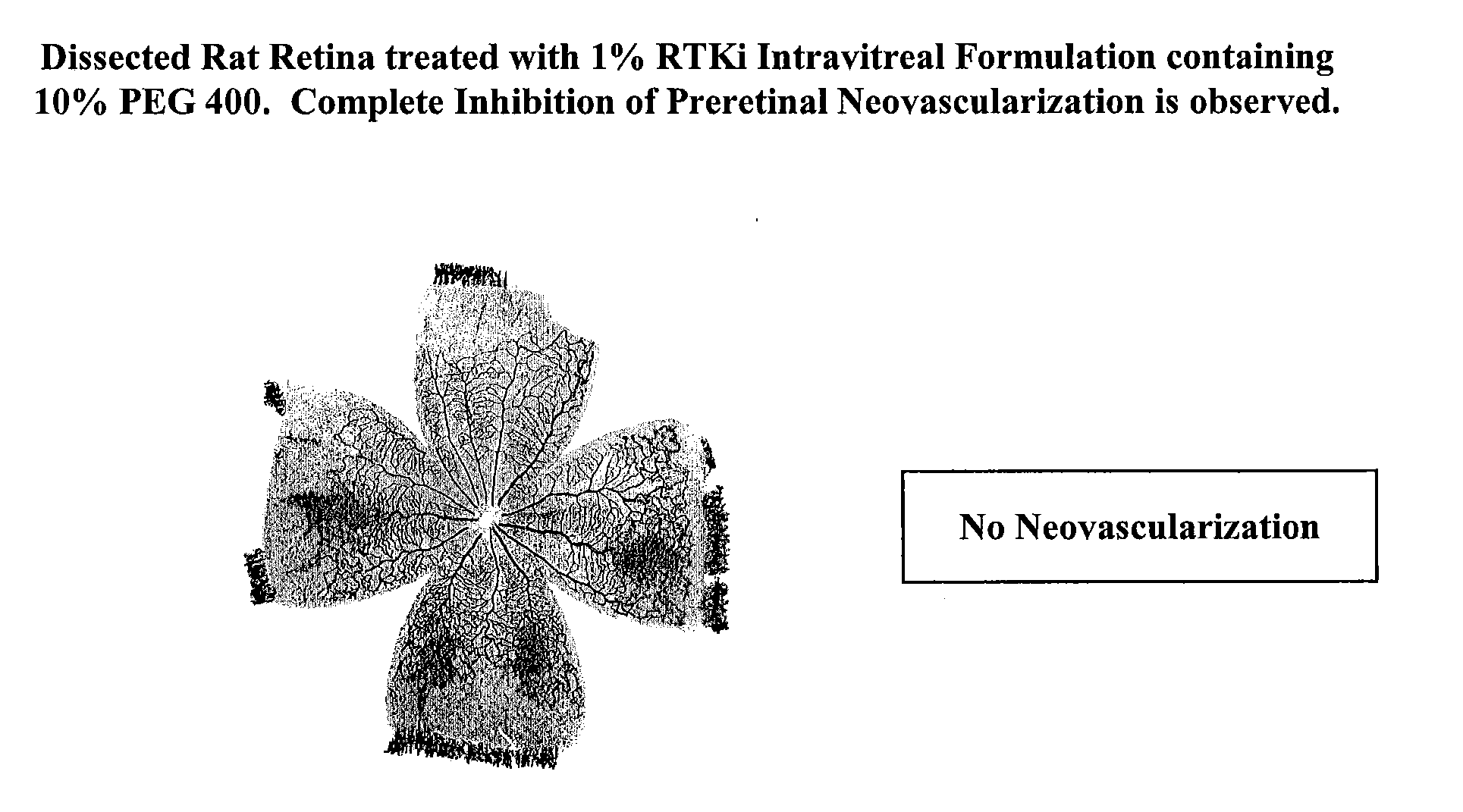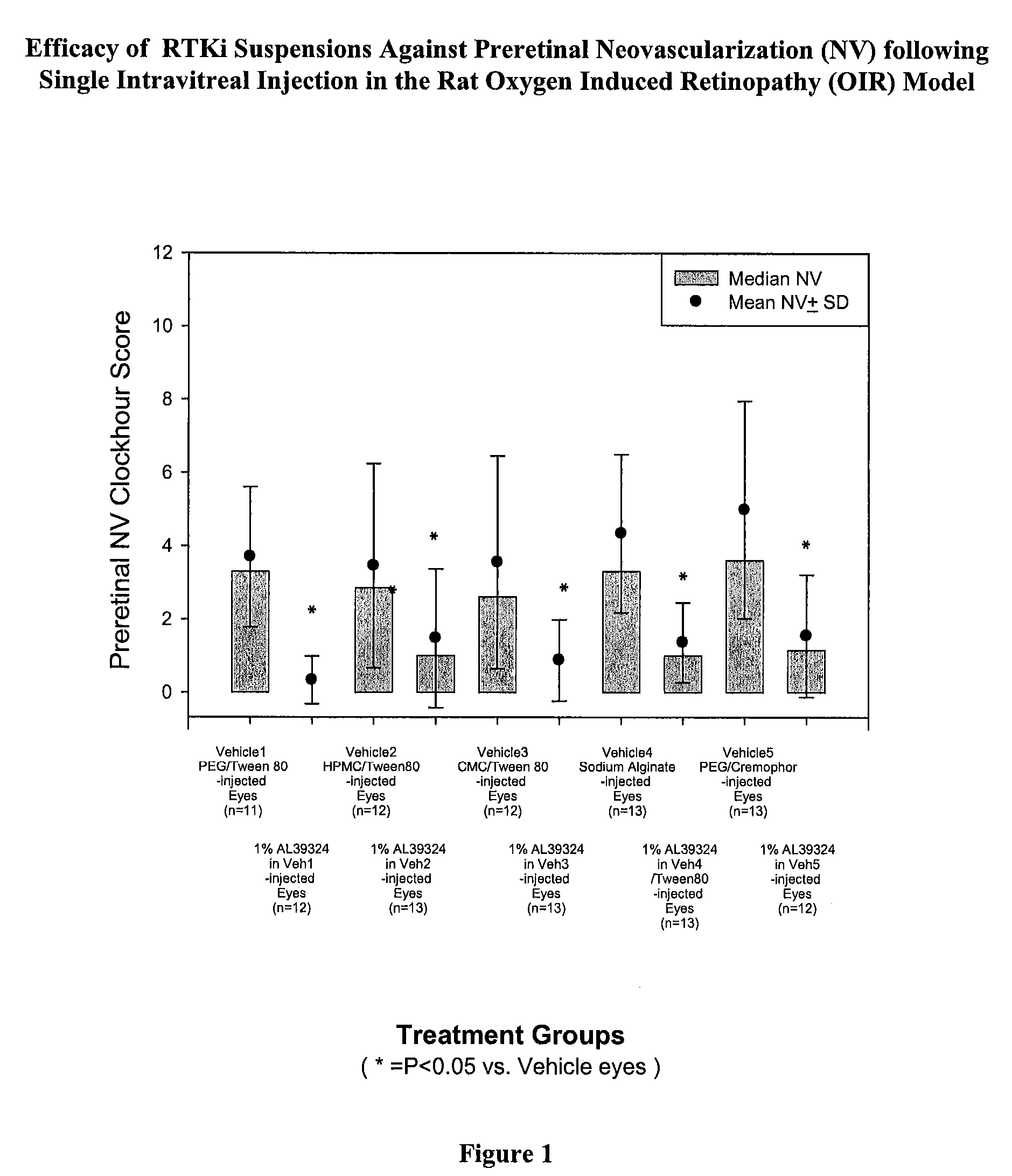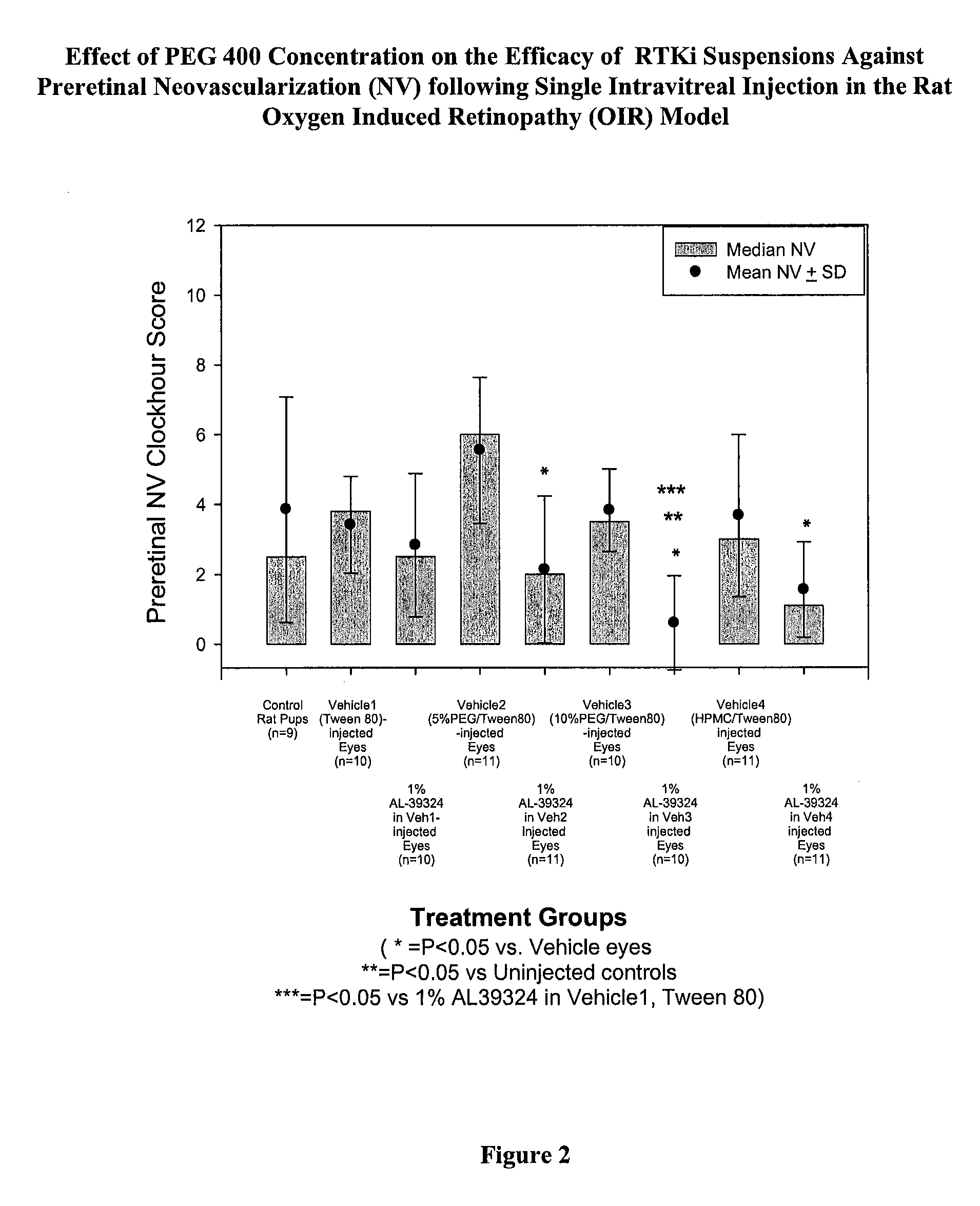PHARMACEUTICAL FORMULATION FOR DELIVERY OF RECEPTOR TYROSINE KINASE INHIBITING (RTKi) COMPOUNDS TO THE EYE
a technology of receptor tyrosine kinase and pharmaceutical formulation, which is applied in the direction of drug composition, cardiovascular disorder, biocide, etc., can solve the problems of irreversible vision loss, break through the inner limiting membrane into the vitreous, and severe vision loss, etc., to achieve the effect of increasing vascular permeability
- Summary
- Abstract
- Description
- Claims
- Application Information
AI Technical Summary
Benefits of technology
Problems solved by technology
Method used
Image
Examples
example 1
[0054] This example illustrates the composition and method of preparation of a preferred intravitreal formulation vehicle.
IngredientAmount (w / v, %)PEG 40010Polysorbate 800.5HPMC 29100.5Dibasic sodium phosphate, dodecahydrate0.18Sodium hydroxideq.s. to pH 7.2Hydrochloric acidq.s. to pH 7.2Water for Injectionq.s. to 100
[0055] In a 250 mL glass container, was added 3.60 g sterile 10% dibasic sodium phosphate, dodecahydrate solution. To it was added 20 g sterile PEG 400 and stirred until a uniform solution formed. To the above solution was added 10 g sterile 10% polysorbate 80 solution and 50 g of sterile 2% stock HPMC 2910 (E4M) solution and stirred well until homogeneous. Sterile water for injection was added to get to 95% of batch size. The solution was stirred at RT for 30 min and pH was adjusted to 7.2. Finally, water for injection was added to get final batch of 200 g.
example 2
[0056] This example describes the composition and method of preparation of PJ, periocular and topical ocular formulation vehicle.
IngredientAmount (w / v, %)PEG 40010Polysorbate 800.5HPMC 29100.5Dibasic sodium phosphate, dodecahydrate0.18Sodium Chloride0.18Sodium hydroxideq.s. to pH 7.2Hydrochloric acidq.s. to pH 7.2Water for Injectionq.s. to 100
[0057] In a 250 mL glass container, was added 3.60 g sterile 10% dibasic sodium phosphate, dodecahydrate solution. To it was added 10 g sterile PEG 400 and stirred until a uniform solution formed. To the above solution was added 10 g sterile 10% polysorbate 80 solution, 50 g of sterile 2% stock HPMC 2910 (E4M) solution and 7.6 g 5% sodium chloride stock solution and stirred well until homogeneous. Sterile water for injection was added to get to 95% of batch size. The solution was stirred at RT for 30 min and pH was adjusted to 7.2. Finally, water for injection was added to get final batch of 200 g.
example 3
[0058] This example illustrates the composition as well as method of preparation of a representative pharmaceutical formulation for intravitreal ophthalmic administration containing the RTKi, N-[4-(3-amino-1H-indazol-4-yl)phenyl]-N′-(2-fluoro-5-methylphenyl)urea.
IngredientAmount (w / v, %)RTKi0.1-10PEG 40010Polysorbate 800.5HPMC 29100.5Dibasic sodium phosphate, dodecahydrate0.18Sodium hydroxideq.s. to pHHydrochloric acidq.s. to pHWater for Injectionq.s. to 100%
[0059] RTKi raw material was sterilized by autoclaving at 121° C. for 45 minutes. Sterile RTKi raw material (1 g) was weighed in a polypropylene container, and to it was added 25 g sterile 2% polysorbate 80 stock solution. The slurry was ball milled at RT for 12 h using Zirconia beads. At the end of ball milling, carefully filtered the suspension through a Buckner funnel and washed the Zirconia beads thoroughly with sterile water. To the above solution, 10 g sterile PEG 400, 3.6 g 5% sterile stock solution of dibasic sodium ph...
PUM
| Property | Measurement | Unit |
|---|---|---|
| anti-vascular permeability | aaaaa | aaaaa |
| concentration | aaaaa | aaaaa |
| solubility | aaaaa | aaaaa |
Abstract
Description
Claims
Application Information
 Login to View More
Login to View More - R&D
- Intellectual Property
- Life Sciences
- Materials
- Tech Scout
- Unparalleled Data Quality
- Higher Quality Content
- 60% Fewer Hallucinations
Browse by: Latest US Patents, China's latest patents, Technical Efficacy Thesaurus, Application Domain, Technology Topic, Popular Technical Reports.
© 2025 PatSnap. All rights reserved.Legal|Privacy policy|Modern Slavery Act Transparency Statement|Sitemap|About US| Contact US: help@patsnap.com



